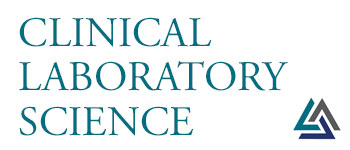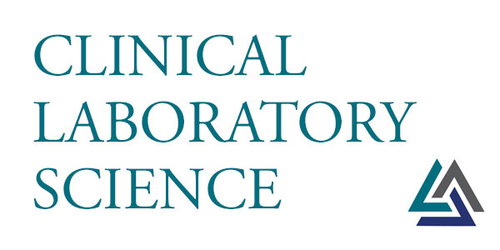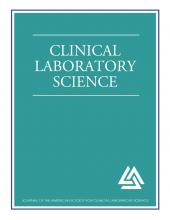This article requires a subscription to view the full text. If you have a subscription you may use the login form below to view the article. Access to this article can also be purchased.
- Deborah Josko, PhD, M(ASCP)CM, MLT,SM⇑
- Address for correspondence: Deborah Josko, PhD, M(ASCP)CM, MLT,SM, associate professor, Department of Clinical Laboratory Sciences, Medical Laboratory Science Program, University of Medicine and Dentistry of New Jersey, 1776 Raritan Road, Scotch Plains, NJ 07076. (908) 889-2422. joskotda{at}umdnj.edu.
Compare and contrast traditional PCR and real-time PCR methodologies.
Describe common real-time PCR fluorescent detection chemistries.
Discuss various real-time PCR HIV-1 assays.
Explain the principle of transcription mediated assays and hybridization protection assays.
Discuss the methodology of the Hybrid Capture 2 High-Risk HPV test.
List FDA cleared molecular diagnostic viral assays.
Extract
The “gold standard” for viral identification is the conventional cell culture. Although cell culture has proven effective in the identification process of viral pathogens, there are shortcomings to this technology. Turn around times can range anywhere from days to weeks depending on the virus isolated; contamination rates are high; and some viruses are non-culturable making it virtually impossible to identify the microorganism. The need for rapid, sensitive, and accurate identification is imperative to ensure appropriate treatment and improve patient care. Although there are many rapid methods and serological assays available to identify viral agents, nucleic acid based detection and amplification-based assays are proving to be the most accurate and quickest identification processes. Results are reported in two to three hours compared to days or weeks for conventional cell culture.
The invention of the polymerase chain reaction (PCR) by Dr. Kary Mullis in 1983 revolutionized the field of molecular biology and modern medicine. Cetus Corporation, the company Dr. Mullis was working for at the time of his discovery, was awarded the patent for PCR in 1987.1 Cetus in turn sold the rights to Hoffman La-Roche in 1992 and in 1993, the FDA approved the first diagnostic PCR assay; the AMPLICOR Chlamydia trachomatis test, in the U.S.1 Since then, the use of PCR technology in the clinical laboratories has escalated, especially in the last two decades. Traditional PCR, however, proved to have several shortcomings. Some of the limitations include detection at the end point of the reaction, which results in low sensitivity…
ABBREVIATIONS: bDNA = Branched DNA; CD = Cluster of Differentiation; CI = Confidence Interval; CIN = Cervical Intraepithelial Neoplasia; DNA = Deoxyribonucleic Acid; FDA = Food and Drug Administration; FRET = Fluorescence Resonance Energy Transfer; HBV = Hepatitis B Virus; HCV = Hepatitis C Virus; HIV = Human Immunodeficiency Virus; HPA = Hybridization Protection Assay; NASBA = Nucleic Acid Sequence Based Amplification; PCR = Polymerase Chain Reaction; QS = Quantitation Standard; RLU/CO = Relative Light Units/Cutoff Value; RNA = Ribonucleic Acid; RT = Reverse Transcription; RT-PCR = Reverse Transcription Polymerase Chain Reaction; Taq = Thermus aquaticus; TMA = Transcription-Mediated Amplification.
- INDEX TERMS
- Molecular Methods
- Polymerase Chain Reaction
- Real-Time PCR
- TaqMan Probes
- Molecular Beacons
- Dual Hybridization Probes
- Fluorescence Resonance Energy Transfer
- Transcription-Medicated Amplification
- Hybridization Protection Assay
- Hybrid Capture
- FDA Cleared Molecular Viral Assays
Compare and contrast traditional PCR and real-time PCR methodologies.
Describe common real-time PCR fluorescent detection chemistries.
Discuss various real-time PCR HIV-1 assays.
Explain the principle of transcription mediated assays and hybridization protection assays.
Discuss the methodology of the Hybrid Capture 2 High-Risk HPV test.
List FDA cleared molecular diagnostic viral assays.
- © Copyright 2010 American Society for Clinical Laboratory Science Inc. All rights reserved.






